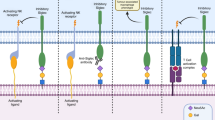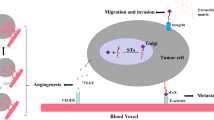Abstract
Tumorigenesis and metastasis are frequently associated with altered structure and expression of oligosaccharides on cell surface glycoproteins and glycolipids. The expression of sialylated glycoconjugates has been shown to change during development, differentiation, disease and oncogenic transformation. Abnormal sialylation in cancer cell is a distinctive feature associated with malignant properties including invasiveness and metastatic potential. The alterations in sialylation is accompanied by changes in sialic acid, sialidase activity, sialyltransferase (ST) activity or sialoproteins. The present review summarizes the reports on alterations of sialic acid, linkage specific STs and sialoproteins, sialidase activity together with different subtypes of ST and sialidases mRNA expressions in various cancers like lung, breast, oral, cervical, ovarian, pancreatic etc. Sialic acids are widely distributed in nature as terminal sugars of oligosaccharides attached to proteins or lipids. The increase shedding of sialic acid observed in malignant tumors may be due to different types of sialidases. The amount of sialic acid is governed by levels of sialidases and STs. Various types of STs are also involved in formation of different types sialylated tumor associated carbohydrate antigens which plays important role in metastasis. The alterations associated with sialylation aids in early diagnosis, prognosis and post treatment monitoring in various cancers. Recently newer drugs targeting different interplays of sialylation have been developed, which might have profound effect in inhibiting sialylation and thus cancer metastasis and infiltration.
Similar content being viewed by others
Abbreviations
- FUT:
-
Fucosyltransferase
- GAL:
-
Galactose
- GL:
-
Glycolipids
- GP:
-
Glycoprotein
- NEU:
-
Neuraminidase
- PSA:
-
Prostate specific antigen
- SLe:
-
Sialyl lewis
- ST:
-
Sialyltransferase
- TACA:
-
Tumor associated carbohydrate antigen
- TSA:
-
Total sialic acid
References
Vajaria BN, Patel KR, Begum R, Patel JB, Shah FD, Shukla SN, Patel PS (2012) Glycoprotein electrophoretic patterns have potential to monitor changes associated with neoplastic transformation in oral cancer. Int J Biol Markers 27:e247–e256
Tian Y, Estena FJ, Song J, Zhang H (2012) Altered expression of sialylated glycoproteins in breast cancer using hydrazide chemistry and mass spectrometry. Mol Cell Proteomics 11:M111.011403
Shah MH, Telang SD, Shah PM, Patel PS (2008) Tissue and serum alpha 2–3- and alpha 2–6-linkage specific sialylation changes in oral carcinogenesis. Glycoconj J 25:279–290
Cylwik B, Chrostek L, Szmitkowski M (2005) Diagnostic value of total and lipid bound sialic acid in malignancies. Pol Merkur Lekarski 19:237–241
Bose SC, Gokhale PV, Dwivedi S, Singh M (2013) Quantitative evaluation and correlation of serum glycoconjugates: protein bound hexoses, sialic acid and fucose in leukoplakia, oral sub mucous fibrosis and oral cancer. J Nat Sci Biol Med 4:122–125
Yakob M, Fuentes L, Wang MB, Abemayor E, Wong DTW (2014) Salivary biomarkers for detection of oral squamous cell carcinoma. Current state and recent advances. Curr Oral Health Rep 1:133–141
Cheng YSL, Rees T, Wright J (2014) A review of research on salivary biomarkers for oral cancer detection. Clin Transl Med 3:1–10
Ozturk LK, Emekli-Alturfan E, Kasikcy E, Demir G, Yarat A (2011) Salivary total sialic acid levels increase in breast cancer patients: a preliminary study. Med Chem 7:443–447
Vajaria BN, Patel KR, Begum R, Patel JB, Shah FD, Joshi GM, Patel PS (2014) Salivary glyco-sialylation changes monitors oral carcinogenesis. Glycoconj J 31:649–659
Pelak MJ, Jarosz B, Straczynska-Niemiec A, Krawczyk P, Skoczylas P, Pecka KM, Snietura M, Szumilo J, Trojanowski T (2014) The presence and clinical implications of α-2,6-galactose-linked sialic acids in non-small-cell lung cancer brain metastases - preliminary study. Folia Histochem Cytobiol 52:104–111
Martinez-Duncker I, Salinas-Marin R, Martinez-Duncker C (2011) Towards invivo imaging of cancer sialylation. Int J Mol Imaging 2011:283497
Lu DY, Lu TR (2012) Development of antimetastatic drugs by targeting tumor sialic acids. Sci Pharm 80:497–508
Lu DY, Xu J, Lu TR, Wu HY, Xu B (2013) Inhibition of several antineoplastic drugs on serum sialic acid levels in mice bearing tumors. Sci Pharm 81:223–231
Miyagi T, Yamaguchi K (2012) Mammalian sialidase: physiological and pathological roles in cellular functions. Glycobiology 22:880–896
Uemura T, Shiozaki K, Yamaguchi K, Miyazaki S, Satomi S, Kato K, Sakuraba H, Miyagi T (2009) Contribution of sialidase NEU1 to suppression of metastasis of human Colon cancer cells through desialylation of integrin beta4. Oncogene 28:1218–1229
Silvestri I, Testa F, Zappasodi R, Cairo CW, Zhang Y, Lupo B, Galli R, Nicola MD, Venerando B, Tringali C (2014) Sialidase NEU 4 is involved in glioblastoma stem cell survival. Cell Death Dis 5:e1381
O’Shea LK, Abdulkhalek S, Allison S, Neufeld RJ, Szewczuk MR (2014) Therapeutic targeting of Neu1 sialidase with oseltamivir phosphate (Tamiflu) disables cancer cells survival in human pancreatic cancer with acquired chemoresistance. Onco Targets Ther 7:117–134
Li X, Zhang L, Shao Y, Liang Z, Shao C, Wang B, Guo B, Li N, Zhao X, Li Y, Xu D (2011) Effects of human plasma membrane associated sialidase siRNA on prostate cancer invasion. Biochem Biophys Res Commun 416:270–276
Tsai CS, Yen HY, Lin MI, Tsai TI, Wang SY, Huang WI, Hsu TL, Cheng YS, Fang JM, Wong CH (2013) Cell-permeable probe for identification and imaging of human sialidases. Proc Natl Acad Sci U S A 110:2466–2471
Harduin-Lepers A, Krzewinski-Recchi MA, Colomb F, Foulquier F, Groux-Degrootes DP (2012) Sialyltransferase functions in cancer. Front Biosci 4:499–515
Hauselmann I, Borsig L (2014) Altered tumor cell-glycosylation promotes metastasis. Front Oncol 4:28
Hakomori S (2001) Tumor associated carbohydrate antigens defining tumor malignancy: basis for development of anticancer vaccines. Adv Exp Med Biol 491:369–402
Skropeta D, Schwörer R, Haag T, Schmidt RR (2004) Asymmetric synthesis and affinity of potent sialyltransferase inhibitors based on transition-state analogues. Glycoconj J 21:205–219
Chen JY, Tang YA, Huang SM, Juan HF, Wu LW, Sun YC, Wang SC, Wu KW, Balraj G, Chang TT, Li WS, Cheng HC, Wang YC (2011) A novel sialyltransferase inhibitor suppresses Fak/paxillin signaling and cancer angiogenesis and metastatic pathways. Cancer Res 71:473–483
Nakano T, Matsui T, Ota T (1996) Benzyl-alpha-GalNAc inhibits sialylation of O-glycosidic sugar chains on CD44 and enhances experimental metastatic capacity in B16BL6 melanoma cells. Anticancer Res 16:3577–3584
Preidl JJ, Gnanapragassam VS, Lisurek M, Saupe J, Horstkorte R, Rademann J (2014) Fluorescent mimetics of CMP-Neu5Ac are highly potent, cell-permeable polarization probes of eukaryotic and bacterial sialyltransferases and inhibit cellular sialylation. Anqew Chem Int Ed Engl 53:5700–5705
Park JJ, Yi JY, Jin YB, Lee YJ, Lee JS, Lee YS, Ko YG, Lee M (2012) Sialylation of epidermal growth factor receptor regulates receptor activity and chemosensitivity to gefitinib in colon cancer cells. Biochem Pharmacol 83:849–857
Rillahan CD, Antonopoulos A, Lefort CT, Sonon R, Azadi P, Ley K, Dell A, Haslam SM, Paulson JC (2012) Global metabolic inhibitors of sialyl- and fucosyltransferases remodel the glycome. Nat Chem Biol 8:661–668
Brown JR, Crawford BE, Esko JD (2007) Glycan antagonists and inhibitors: a fount for drug discovery. Crit Rev Biochem Mol Biol 42:481–515
Ko K, Furukawa K, Takahashi T, Urano T, Sanai Y, Nagino M, Nimura Y, Furukawa K (2006) Fundamental study of small interfering RNAs for ganglioside GD3 synthase gene as a therapeutic target of lung cancers. Oncogene 25:6924–6935
Gu Y, Zhang J, Mi W, Yang J, Han F, Lu X, Yu W (2008) Silencing of GM3 synthase suppresses lung metastasis of murine breast cancer cells. Breast Cancer Res 10:R1
Zhu Y, Srivatana U, Ullah A, Gagneja H, Berenson CS, Lance P (2001) Suppression of a sialyltransferase by antisense DNA reduces invasiveness of human colon cancer cells in vitro. Biochim Biophys Acta 1536:148–160
Saldova R, Fan Y, Fitzpatrick JM, Watson RW, Rudd PM (2011) Core fucosylation and alpha2-3 sialylation in serum N-glycome is significantly increased in prostate cancer comparing to benign prostate hyperplasia. Glycobiology 21:195–205
Almaraz RT, Tian Y, Bhattarcharya R, Tan E, Chen SH, Dallas MR, Chen L, Zhang Z, Zhang H, Konstantopoulos K, Yarema KJ (2012) Metabolic flux increases glycoprotein sialylation: implications for cell adhesion and cancer metastasis. Mol Cell Proteomics 11:M112.017558
Bull C, Boltje TJ, Wassink M, de Graaf AM, van Delft FL, den Brok MH, Adema GJ (2013) Targeting aberrant sialylation in cancer cells using a fluorinated sialic acid analog impairs adhesion, migration, and in vivo tumor growth. Mol Cancer Ther 12:1935–1946
Author information
Authors and Affiliations
Corresponding author
Ethics declarations
Conflict of Interest
The authors declare that they have no conflict of interest.
Rights and permissions
About this article
Cite this article
Vajaria, B.N., Patel, K.R., Begum, R. et al. Sialylation: an Avenue to Target Cancer Cells. Pathol. Oncol. Res. 22, 443–447 (2016). https://doi.org/10.1007/s12253-015-0033-6
Received:
Accepted:
Published:
Issue Date:
DOI: https://doi.org/10.1007/s12253-015-0033-6




